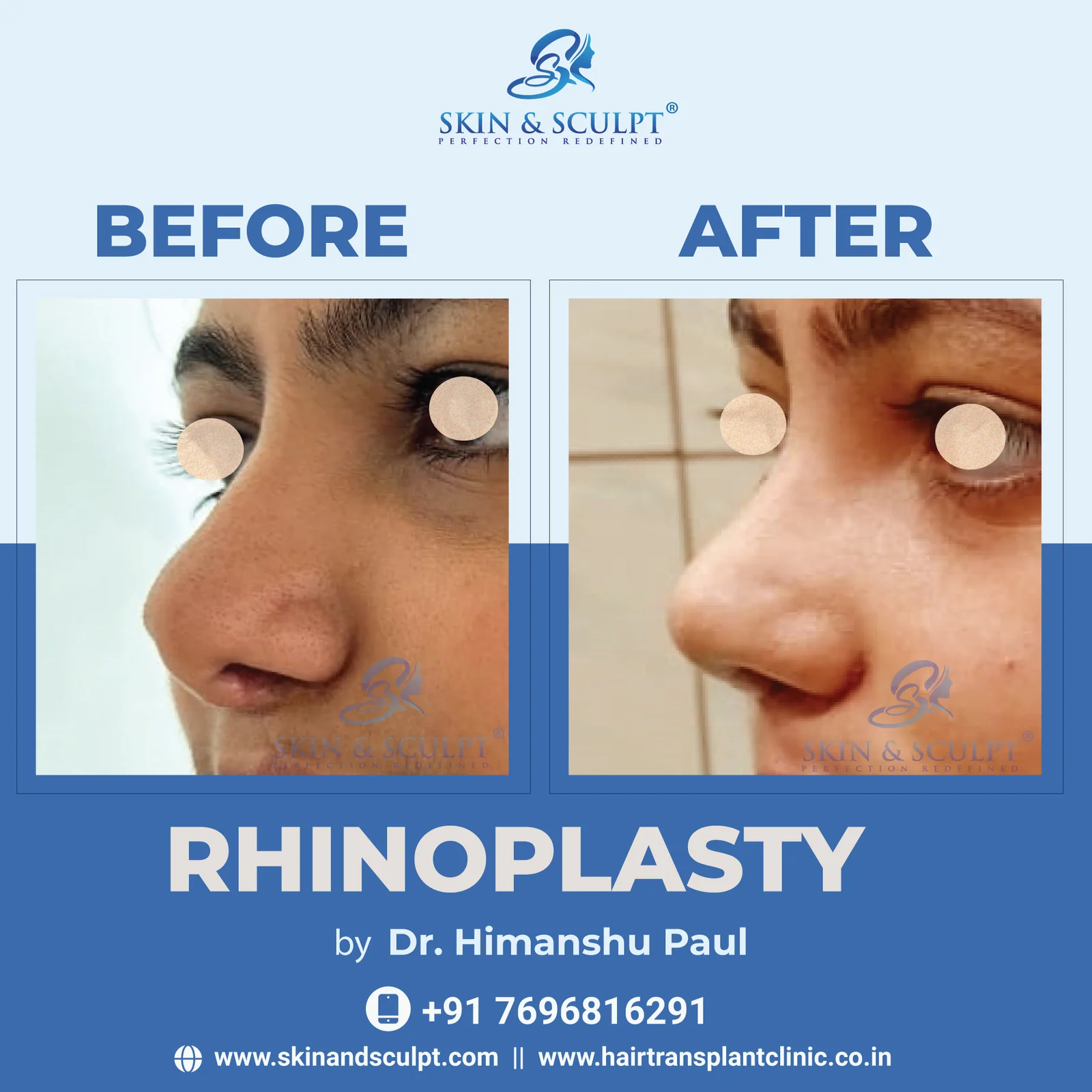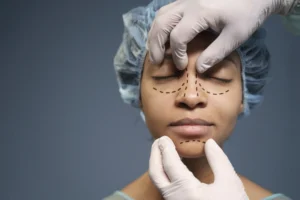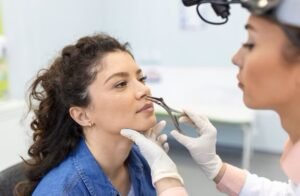Rhinoplasty, commonly known as a nose job, is a popular cosmetic procedure that can enhance the appearance and function of your nose. If you’re considering rhinoplasty in Chandigarh, this guide will help you understand what to expect before, during, and after the surgery. Whether you seek to improve your nose’s appearance or correct breathing issues, rhinoplasty can offer significant benefits.
Before the Surgery
Initial Consultation
The first step in rhinoplasty surgery is the initial consultation with a qualified surgeon. In Chandigarh, many skilled professionals specialize in this procedure. During your consultation, you will:
Discuss Your Goals: Explain why you want the surgery and what you hope to achieve.
Medical History Review: Provide a detailed medical history, including any previous surgeries, medications, and allergies.
Physical Examination: The surgeon will examine your nose’s structure and skin quality. This helps in planning the surgery.
Photographs: The surgeon may take photos of your nose from different angles to plan the surgery and to compare the results post-surgery.
Questions and Concerns: Ask any questions you have about the procedure, recovery, and potential risks.
Pre-Surgery Instructions
In preparation for your surgery, your surgeon will provide detailed instructions to ensure a smooth process. These might involve avoiding certain medications like aspirin, blood thinners, and herbal supplements that could increase bleeding. Smoking can also hinder healing, so quitting several weeks beforehand is recommended. To ensure a safe return home, arrange for someone to drive you after surgery and ideally stay with you for the first night. Finally, if general anesthesia is used, you’ll likely need to fast for a specific timeframe before the procedure.
During the Surgery
Rhinoplasty surgery can be performed using different techniques, depending on your goals and the complexity of the procedure. Here’s what happens during the surgery:
Anesthesia
You will be given either local anesthesia with sedation or general anesthesia, depending on what your surgeon determines is best for your situation.
Incisions
Rhinoplasty can be done using either an open or closed technique:
Closed Rhinoplasty: Incisions are made inside the nostrils. This method leaves no visible scars but is suitable for less complex surgeries.
Open Rhinoplasty: An incision is made across the columella, the strip of tissue between the nostrils. This technique provides better access to the nasal structure and is used for more complex surgeries.
Reshaping the Nose
The surgeon will then reshape the nose according to the plan discussed during your consultation. This may involve:
Removing Bone or Cartilage: To reduce the size of the nose or correct a hump.
Adding Cartilage Grafts: To build up the nasal structure. This cartilage may come from your septum, ear, or ribs.
Correcting Deviated Septum: If you have breathing issues, the surgeon may also correct a deviated septum during the surgery.
Closing the Incisions
Once the reshaping is complete, the surgeon will close the incisions with sutures. If the surgery was open, you might have a small scar on the columella, which typically fades over time.
Dressing and Splints
After the surgery, your nose will be covered with dressings and possibly a splint. These help support your nose as it heals and protect it from accidental bumps.
After the Surgery
Immediate Recovery
After your surgery, you’ll be whisked away to a recovery room for close monitoring for a few hours. Once the anesthesia wears off and you’re stable, you’ll be able to head home. Here’s what to expect in those initial days: some swelling and bruising, particularly around your eyes and nose, which will worsen slightly before gradually improving. You might also experience some pain and discomfort, but don’t worry, medication will be prescribed to keep it under control. To minimize swelling, keep your head elevated as much as possible, and feel free to use cold compresses for additional comfort.
First Week
The first week post-surgery in Chandigarh requires focused recovery. Prioritize rest and avoid strenuous activities. You’ll also have a follow-up appointment with your surgeon to monitor progress and potentially have the splint and any non-dissolvable stitches removed. To prevent disrupting healing, avoid blowing your nose. If a sneeze strikes, do so with your mouth open.
First Month
As your recovery progresses, you can gradually reintroduce activities back into your routine. But remember to take it slow – heavy lifting and strenuous exercise are still off-limits for a while. Protecting your precious new nose is key, so avoid any bumps or undue pressure. If you wear glasses, your surgeon might suggest alternatives like taping them to your forehead for a few weeks to prevent them from putting pressure on your nose.
Long-Term Recovery
Rhinoplasty recovery is a marathon, not a sprint. While the first week is crucial for initial healing, the entire process can take up to a year. During this extended period, you’ll attend follow-up appointments with your surgeon to monitor progress. The most dramatic changes will occur within the first few months as swelling subsides. However, it can take a full year to see the final aesthetic outcome as your nose settles into its new, refined shape. Even any external scarring will gradually fade throughout this time, becoming less noticeable.
Risks and Complications
Like any surgery, rhinoplasty carries some risks. These include:
Infection: Although rare, infections can occur and may require additional treatment.
Bleeding: Some bleeding is normal, but excessive bleeding may need medical attention.
Breathing Difficulties: Changes in the nasal structure can sometimes lead to breathing issues.
Unsatisfactory Results: In some cases, patients may not be satisfied with the results and may require revision surgery.
Choosing a skilled and experienced surgeon for your rhinoplasty in Chandigarh can help minimize these risks and ensure the best possible outcome.
Choosing the Right Surgeon
When considering rhinoplasty surgery, choosing the right surgeon is crucial. Here are some tips:
Research and Reviews: Look for surgeons with positive reviews and a track record of successful rhinoplasty surgeries.
Credentials and Experience: Ensure the surgeon is board-certified and has extensive experience in performing rhinoplasty.
Before and After Photos: Reviewing before and after photos of previous patients can give you an idea of the surgeon’s work and potential results.
Comfort and Communication: Choose a surgeon you feel comfortable with and who takes the time to listen to your concerns and answer your questions.
Conclusion
Rhinoplasty can enhance your appearance and improve your quality of life, especially if you have breathing issues. Understanding what to expect before, during, and after the surgery can help you prepare for the procedure and ensure a smoother recovery.
If you’re considering nose surgery in Chandigarh, take the time to research and choose a qualified surgeon. Follow all pre- and post-surgery instructions carefully to achieve the best possible results. With patience and proper care, you can look forward to a beautifully reshaped nose that enhances your facial harmony and boosts your confidence.




